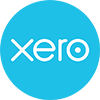If you run a professional services firm, there are many tax issues to consider in the allocation of profits. The ATO is particularly concerned about individual professionals with an ownership interest who redirect their income to an associated entity, such as a trust, with the effect of significantly reducing their tax liability – raising the prospect that anti-avoidance provisions could apply. From 1 July 2022, new guidelines explaining the ATO’s compliance approach to profit allocations will commence. These guidelines assist taxpayers to identify their particular risk level and understand whether their profit allocation arrangement may attract attention from the ATO.
Before speaking to your adviser or business accountants in Melbourne, it may help you to understand the new two-step process for identifying your risk.
Step 1: Pass the “Gateways”
For the guidelines to apply to your profit allocation arrangement, you must satisfy two “gateway” tests.
Firstly, does the arrangement have a sound and genuine commercial rationale? The ATO suggests that a change in tax performance, without any other non-tax related practical changes, strongly indicates a lack of commercial rationale.
Secondly, are you satisfied that the arrangement has no “high risk” features? This includes anything flagged in a Taxpayer Alert, as well as the following:
- Financing arrangements related to non-arm’s length transactions. For example, where an associated entity borrows to acquire the individual’s ownership interest and claims deductions for interest expenses.
- Exploiting artificial differences between taxable income and accounting income.
- Where a non-equity partner assigns their fixed-draw income to their associated entity.
- Multiple classes of shares and units held by non-equity holders.
If you don’t meet these gateway tests, the guidelines don’t apply, and you should seek professional advice.
Step 2: Identify Your Risk
If you pass the gateways, the next step is to consider three risk assessment factors (or two, if the third is impractical) and use the tables in the ATO’s guidelines to identify your “score” for each factor. The total of your scores – adjusted for whether you apply two or three factors – will determine which risk zone the arrangement falls into: low, moderate or high risk.
The three factors are:
- Proportion of the income entitlement assessed in the hands of the individual professional (as opposed to their associated entities) – the greater this proportion, the lower the risk score.
- Total effective tax rate for income received from the firm by the individual and associated entities – the higher the effective tax rate, the lower the risk score.
- Remuneration assessed in the hands of the individual as a percentage of a commercial “benchmark” for the services provided to the firm (optional) – higher percentages yield a lower risk score.
Your adviser can help you perform these calculations.
If your arrangement is in the “low risk” zone, you can have confidence that the ATO will generally not dedicate compliance resources to testing your arrangement. If it rates as “moderate” or higher, the ATO is likely to analyse your situation further. Arrangements that were previously “low risk” but now have a higher rating may qualify for a transitional period until 30 June 2024 in which to apply the ATO’s previous guidance.
Now is the Time to Take Action
The ATO says taxpayers should self-assess their risk annually, document the assessment and be able to provide supporting evidence in the event the ATO fact-checks the assessment. Contact Alexander Bright today for expert assistance in assessing and managing your risk. Our accounting firm can also assist you with a range of bookkeeping services and business accounting services in Melbourne.
Managed Accounting Services
Our Newsletter
Article Categories
Select Month
 +61 3 8658 5821
+61 3 8658 5821




